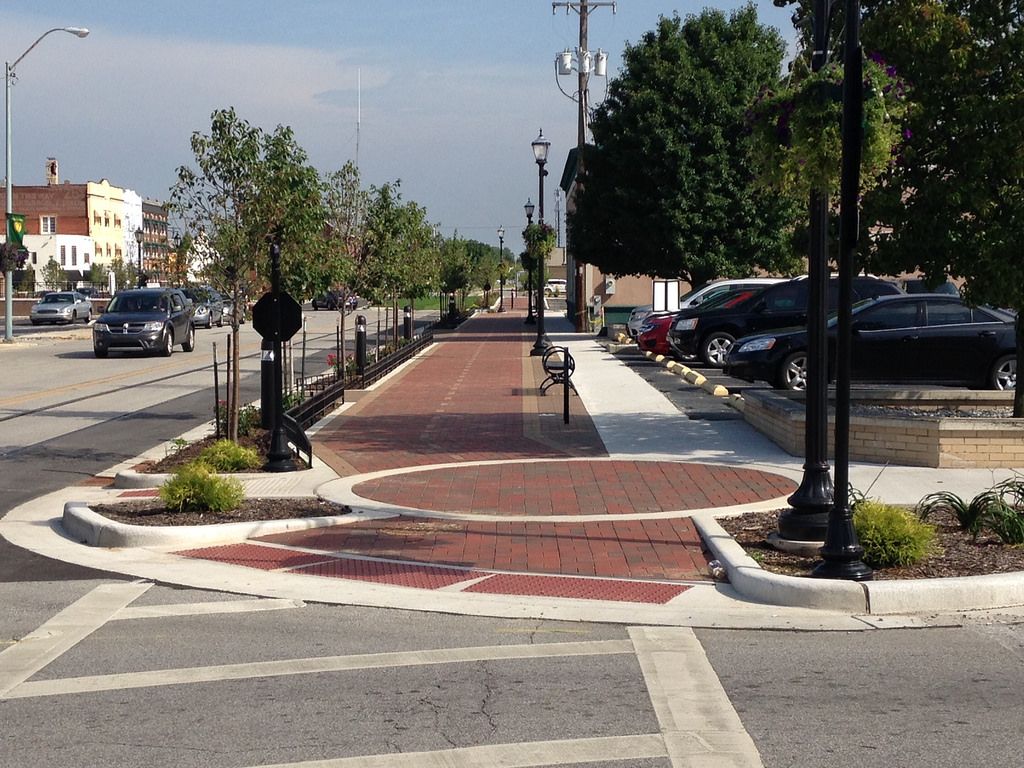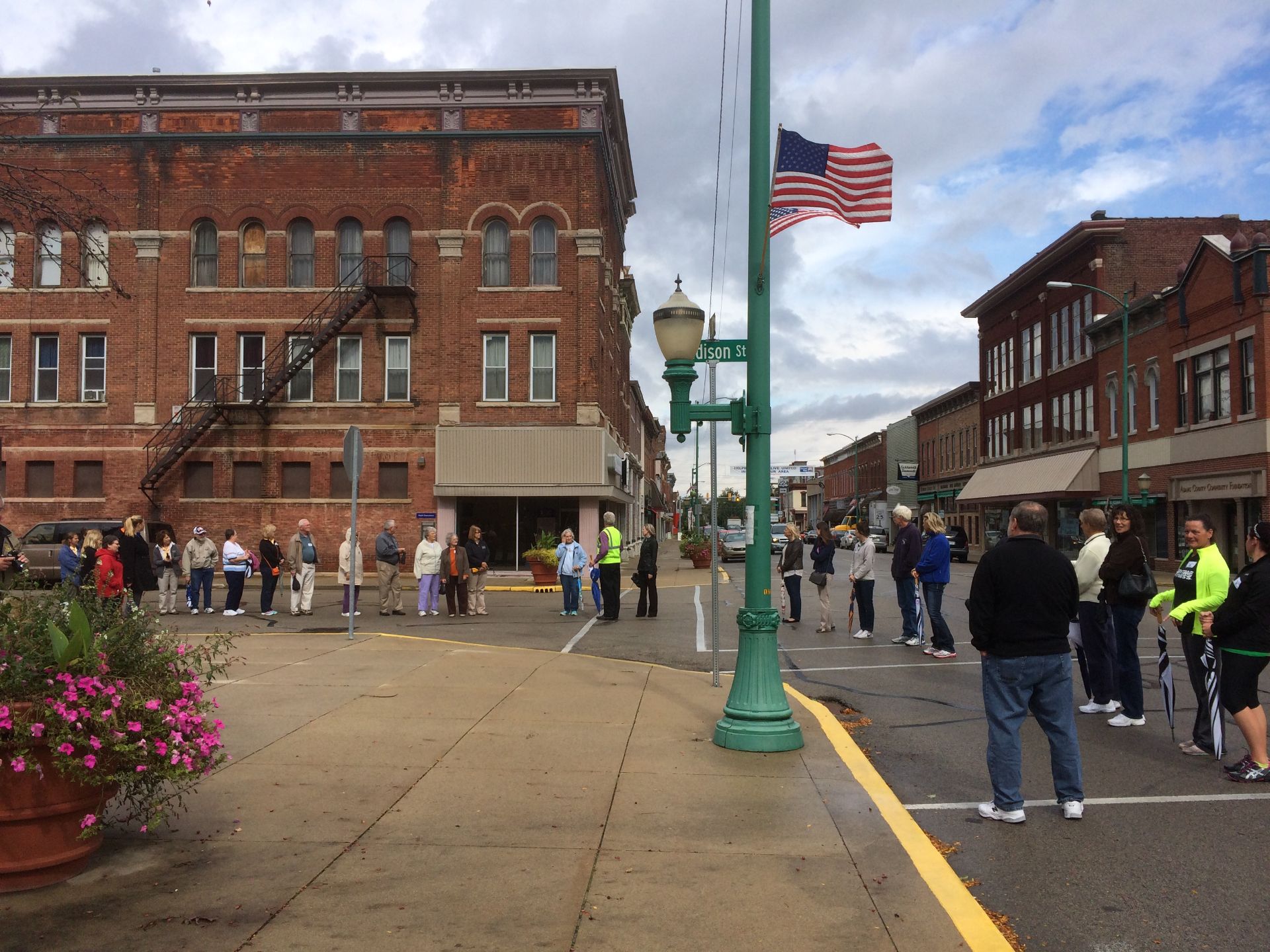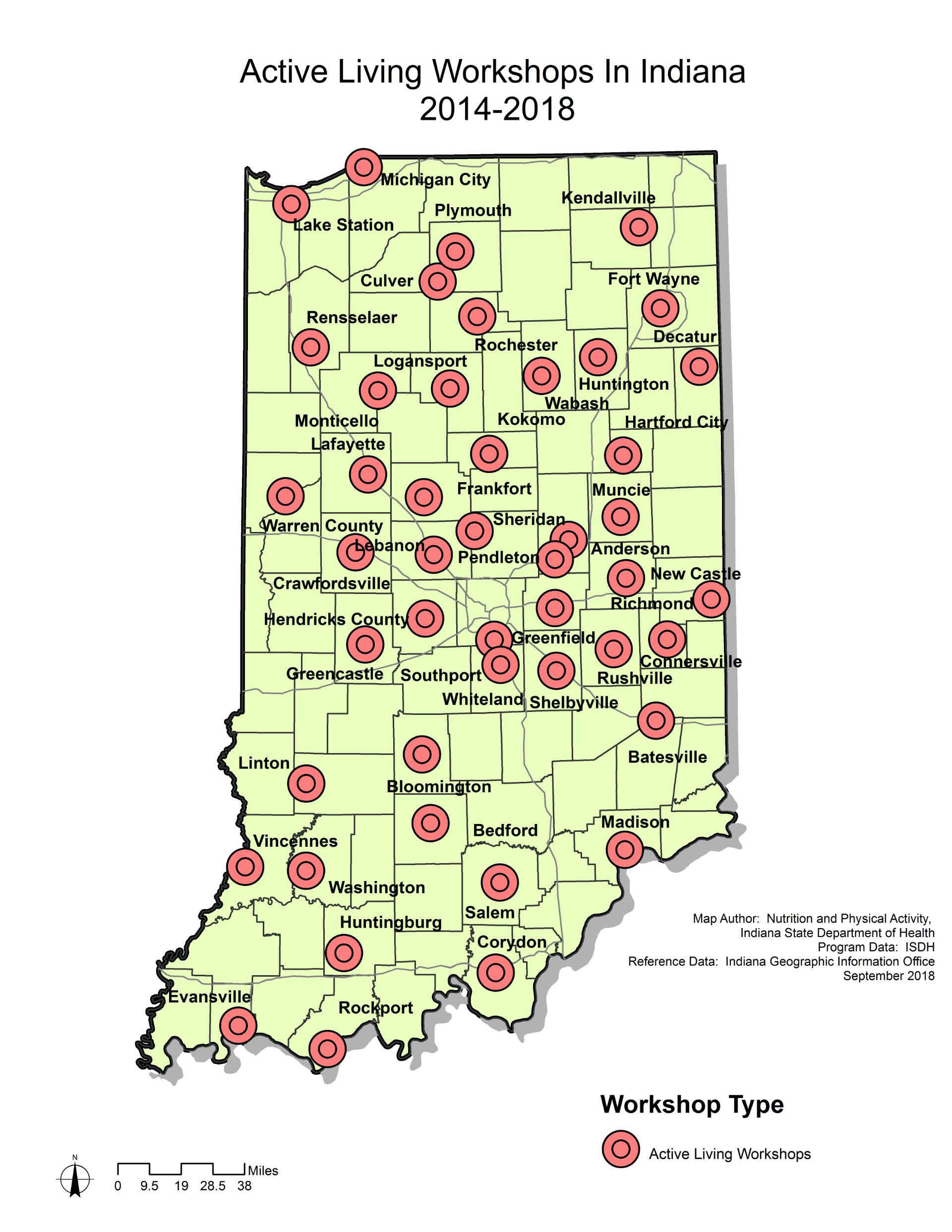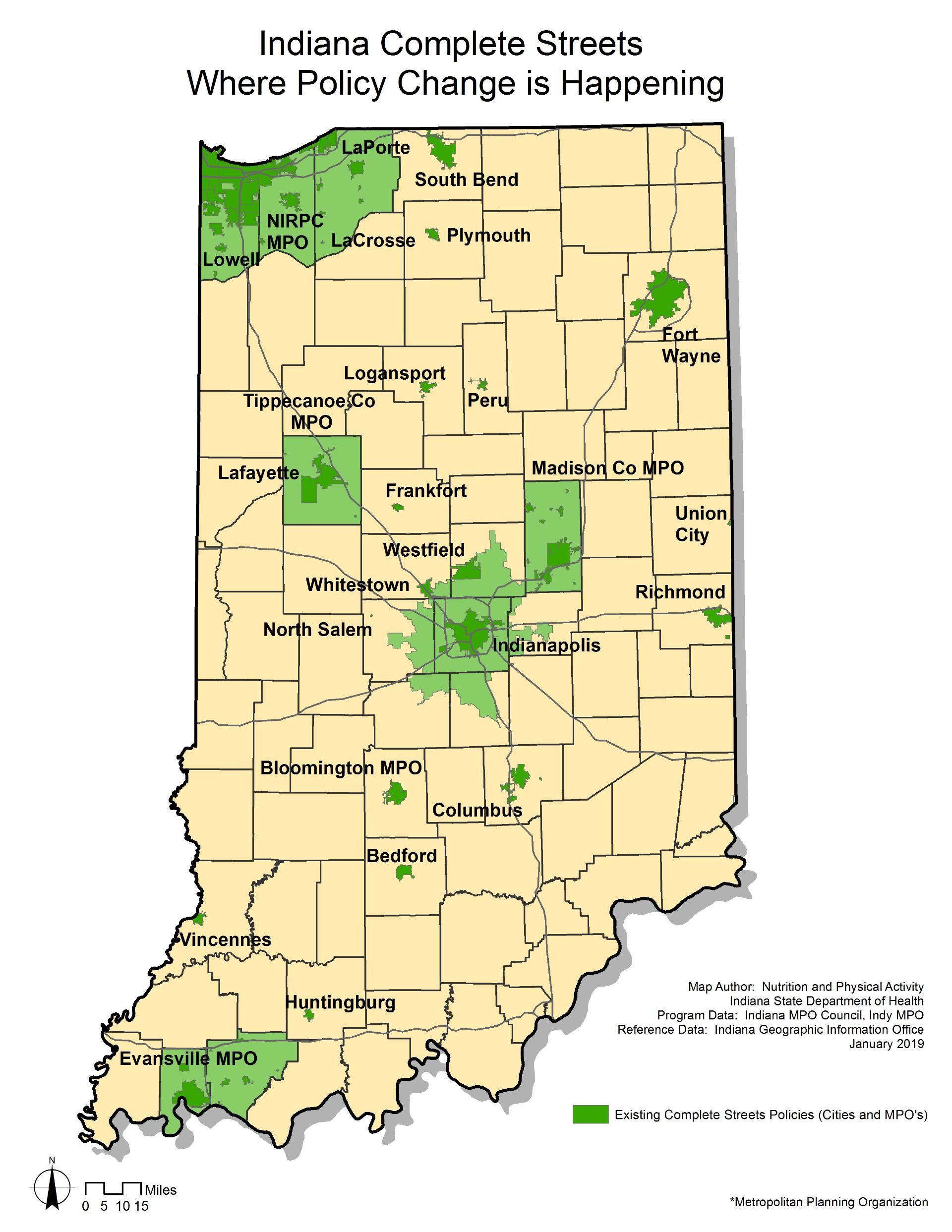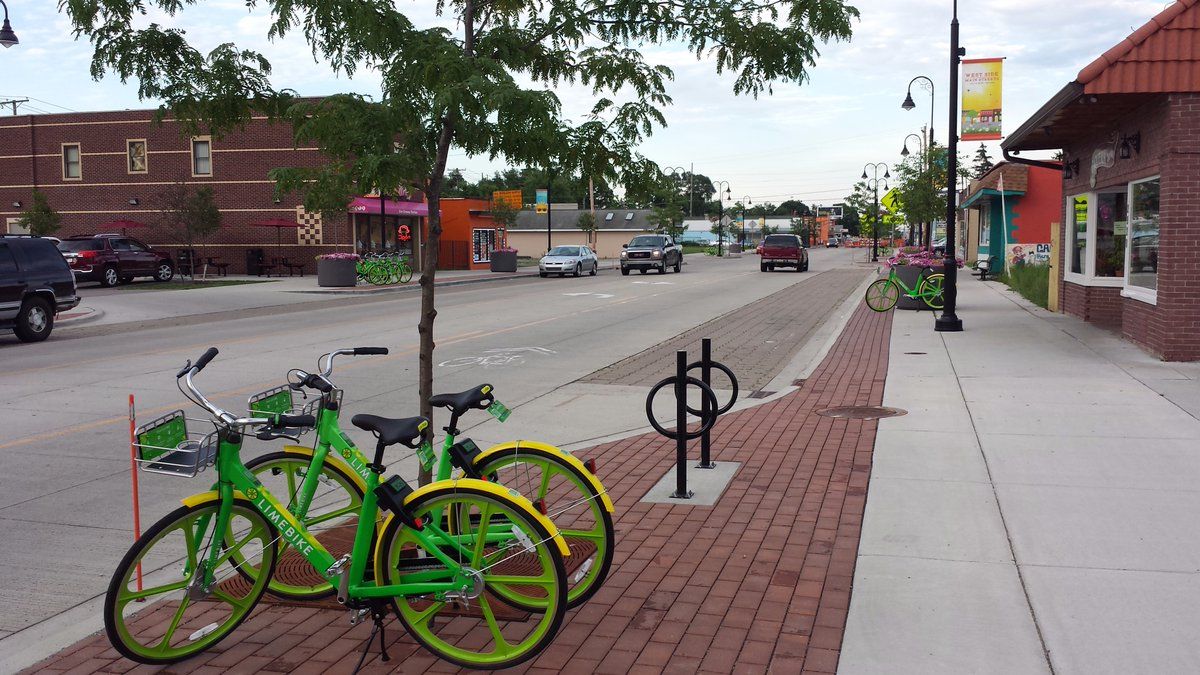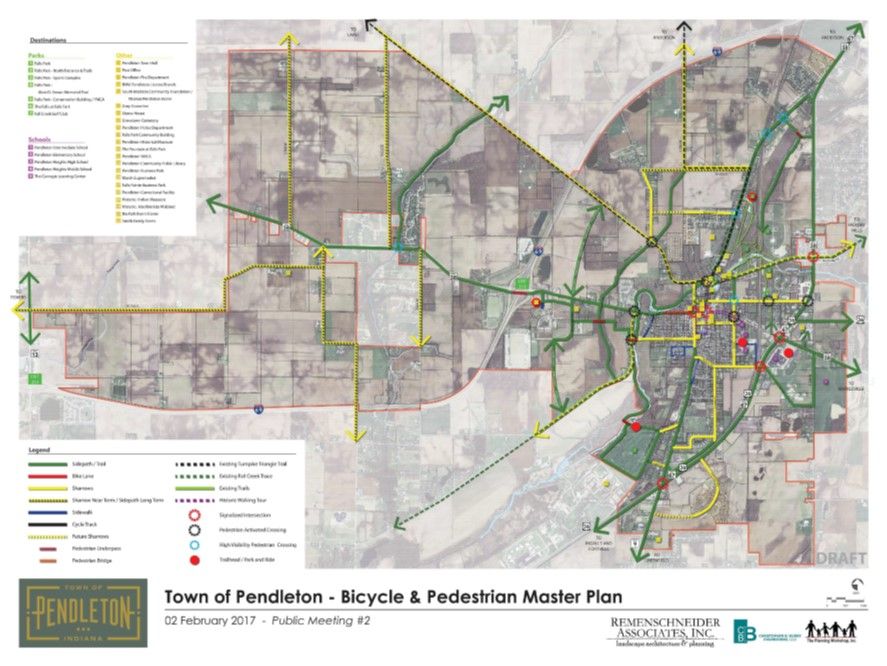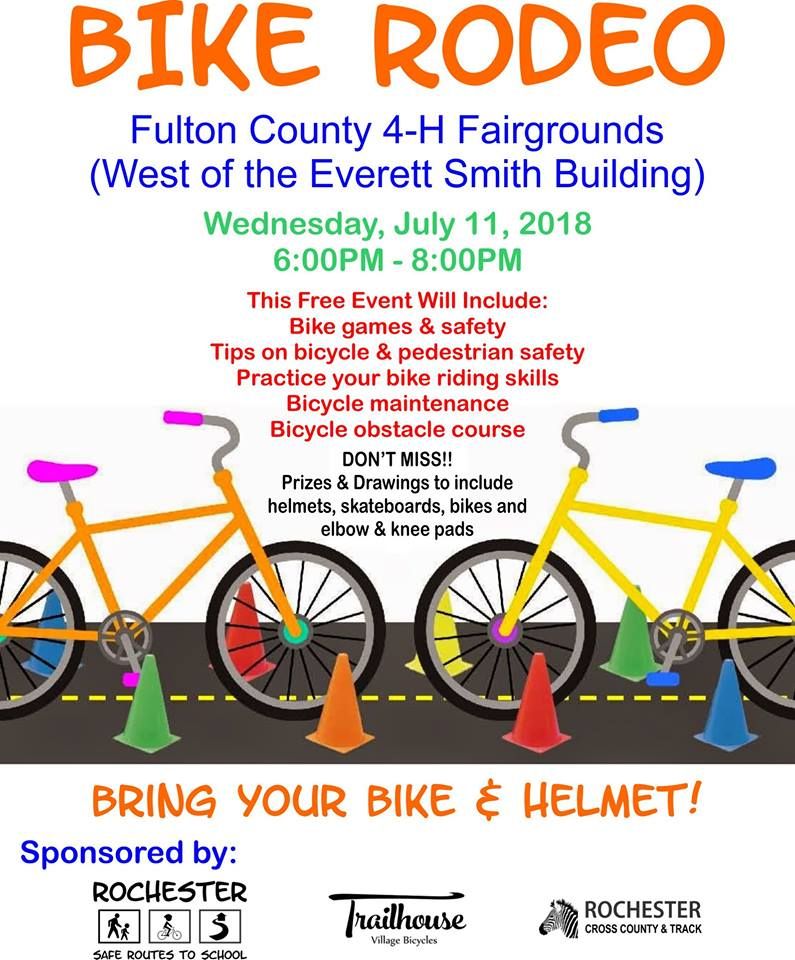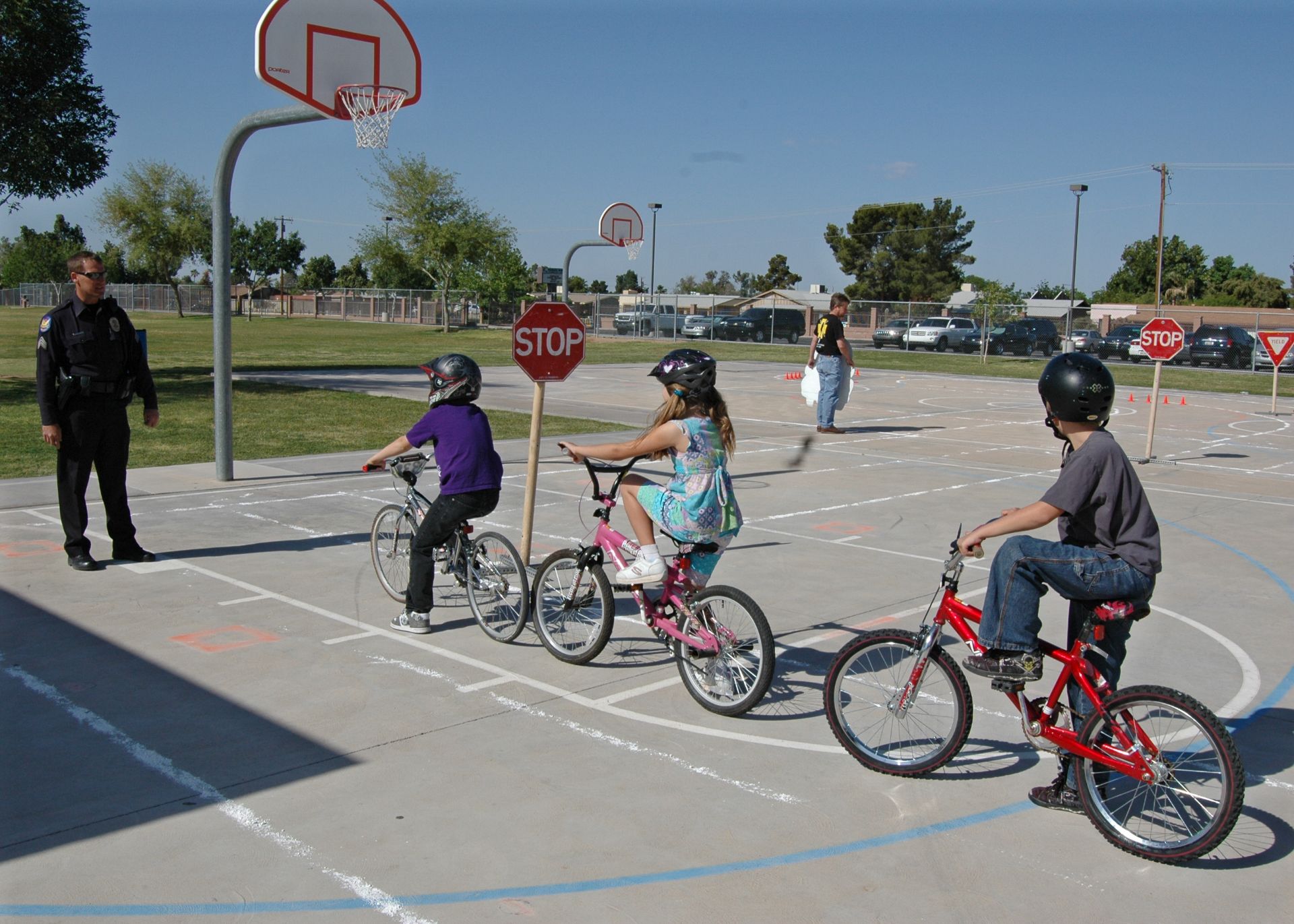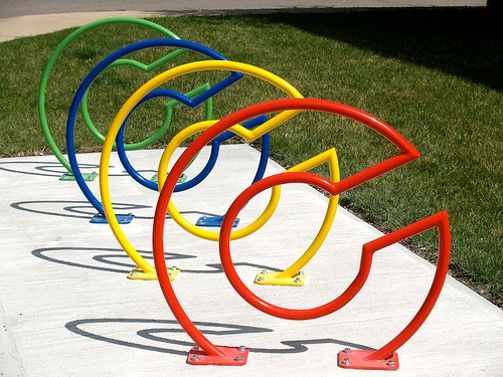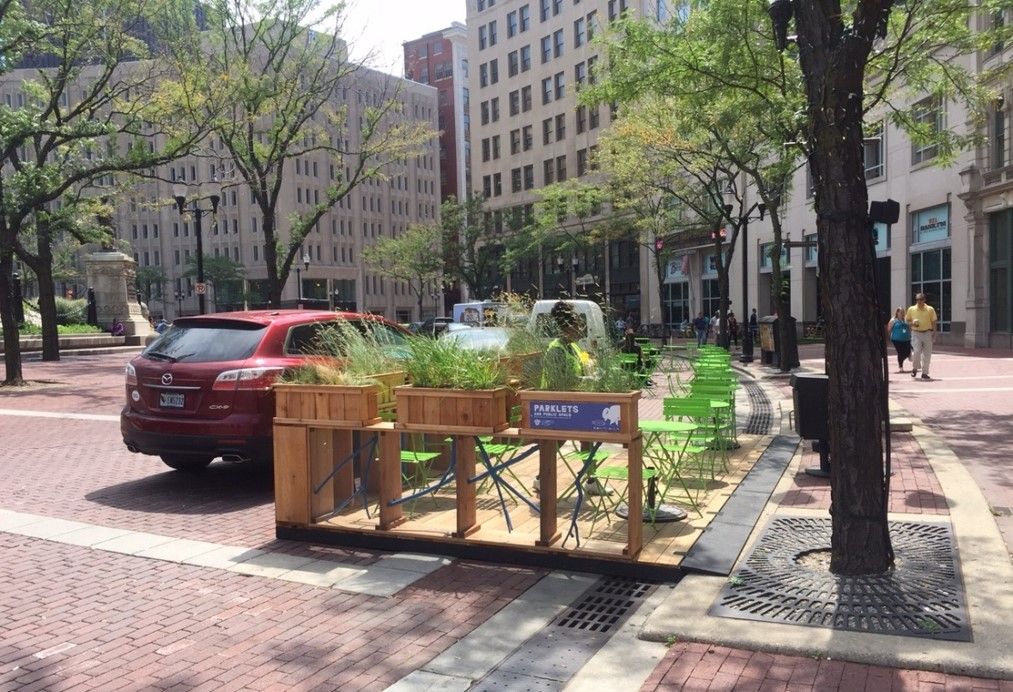Community Physical Activity/Built Environment
Many communities need more safe and accessible places to walk or be active outdoors. Approximately 36.8% of adults living in Indiana were obese in 2020, and less than 50% of adult Indiana residents met moderate physical activity recommendations in 2019. Current research points to the fact that people who live in car-dependent environments walk less, weigh more, and suffer from related chronic diseases such as hypertension (high blood pressure).
Complete Streets
Complete Streets are designed and operated to enable safe access for all users—pedestrians, bicyclists, motorists, and public transportation users of all ages and abilities can safely move along and across a Complete Street. Communities are encouraged to adopt their own Complete Streets policies and to design and retrofit their communities using a Complete Streets approach, making walking and biking the safe and easy choice.
The Indiana Department of Transportation (INDOT), IDOH and Health by Design have promoted the adoption of Complete Streets policies in Indiana and have been actively engaged in increasing the number of cities adopting Complete Streets policies.
Active Living Workshops 
IDOH created a program to fund and facilitate a series of Active Living Workshops across Indiana to address the need to create more active communities. For this program, DNPA is currently partnering with INDOT and Health by Design, a statewide coalition that works at the intersection of the built environment and public health to conduct these day-long workshops. Purdue University Extension Service also provided funding and staff support for some of the workshops in the past.
From 2014 to 2022, DNPA and its partners conducted 50 Active Living Workshops across Indiana. More than 1,800 community stakeholders—including city planners, engineers, public health professionals, school administrators and community leaders—attended these workshops. The participants agreed to a year-long set of follow-up activities, including drafting an action plan, providing status reports and reporting success stories outlining each community’s achievements.
The Division of Nutrition and Physical Activity (DNPA) and Health by Design has recently published the Indiana Active Living Guidebook. This guidebook describes the reason we promote this work in Indiana and includes a step-by-step approach that communities can use to increase the levels of physical activity for their residents. It also includes success stories from communities across Indiana that are making it easier to be active in their everyday lives.

